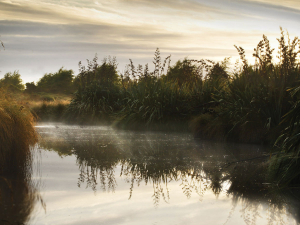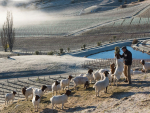With the stars of Matariki to rise in June, Jeff Sinnott, a member of the Tuku Māori Winemakers Collective, looks at their relevance to our grape and wine community.
Matariki is the celebration of the Māori new year. Māori observed the seasonal rhythm using a lunar calendar by observing different celestial bodies as they traversed the sky. Located in the broader constellation of Taurus, Matariki was known to the ancient Greeks as Pleiades, to the Japanese as Subaru, and in ancient Sanskrit as Krttikā – which literally means to cut or bisect the year. So you could say that conceptually Matariki is as old as human civilisation itself.
Each of these cultures, and many besides, observed that the cluster rising on the horizon marked a distinct change in the seasons. In the southern hemisphere, and to Māori in particular, it represents the beginning of a new year, a time for whānau, hapū and iwi to reflect and give thanks for the bounties of the previous harvest season. It is also a time to say farewell to members of the community that have passed since Matariki last rose. Today we give thanks as we assemble in groups at dawn, give karakia, waiata and hautapu, where we offer food from each of the earthly realms to serve as sustenance for our tipuna as they journey back to Matariki and their place among the stars.
The constellation itself is made up of nine stars each representing a different role in our environment.
Waitī watches over our freshwater environments – our awa (rivers), roto (lakes), kūkūwai (wetlands), and waipuna (springs), to name just a few. Waitī is relevant to New Zealand’s wine industry, and our work with Project Raumatatiki - Freshwater Farm Planning for Viticulture. Waitā surveys our vast oceans and the variety of life in these waters. Waitā is relevant to us in our efforts to promote biodiversity in our taio (environment).
Waipuna-ā-rangi welcomes the winter sky waters in all their forms, including ua (rain), ua nganga (hail) and hukarere (snow). She sees how these waters contribute to the healthy cycle of our earth. Waipuna-ā-rangi encourages us to reflect about climate change, and guides us on our path towards Net Zero by 2050.
Tupu-ā-nuku has a special interest in our edible plants. In watching the preparations for their growth and harvest, she has come to understand the importance of healthy soil. Tupu-ā-nuku encourages us to consider more carefully what we are putting into Papatūānuku (the earth), and in what quantities. You could consider Tupu-ā-Nuku as the guardian of grapes and vineyards.
Tupu-ā-rangi has long looked out for the ngahere (forests), our native wildlife – manu (birds and bats), mokomoko (lizards), and ngārara (bugs). Tupu-ā-rangi encourages us to take action to help to preserve our forest environment by exercising the principles of biosecurity.
Ururangi is close friends with te whānau puhi (the wind family), including Hauraro (the north wind), Tonga (the south wind), Hauāuru (the west wind) and Marangai (the east wind). Ururangi provides us with our most powerful tool in plant protection – air flow.
Pōhutukawa holds tight to our memories of treasured people who have passed on. She encourages us to take time to remember them, and to acknowledge their impact on our lives – especially those who have passed in the last year.
Hiwai-i-te-rangi is a wishing star, who helps us to recognise our hopes, dreams and aspirations for the coming year. She encourages us to hold firm to our goals, and seek out opportunities to see them realised. We could all do with the guidance of Hiwaii- te-rangi in the current geopolitical climate.
Matariki is the mother of them all. She loves to gather the people together, and to connect them with our environment. She encourages us to do the same, as often as possible.
So maybe this year, as we celebrate Matariki and all it represents, take the time to reflect on the deeper meaning of our role in this community and how we can work together to create a more more sustainable, respectful and meaningful year ahead.
The Matariki public holiday is based on the winter rising of the Matariki cluster in the early morning sky during the Tangaroa period of the lunar month of June. In 2025 the Tangaroa period is June 19-22 and the public holiday is Friday 20 June.














